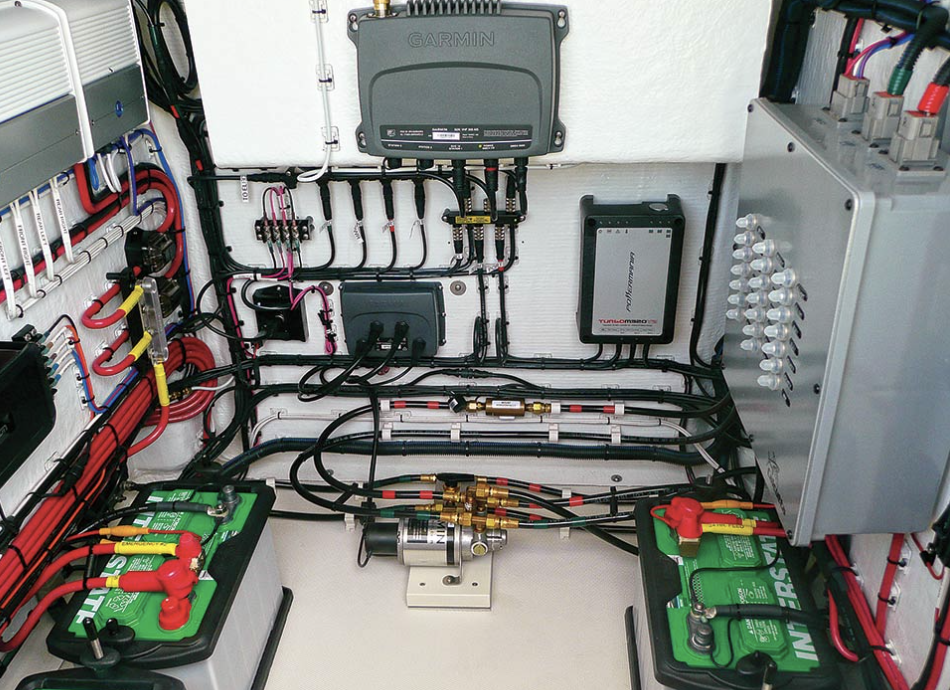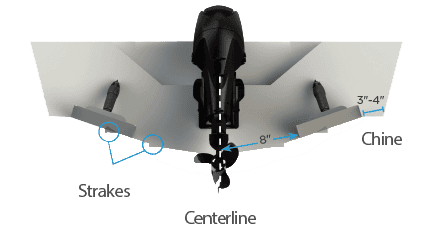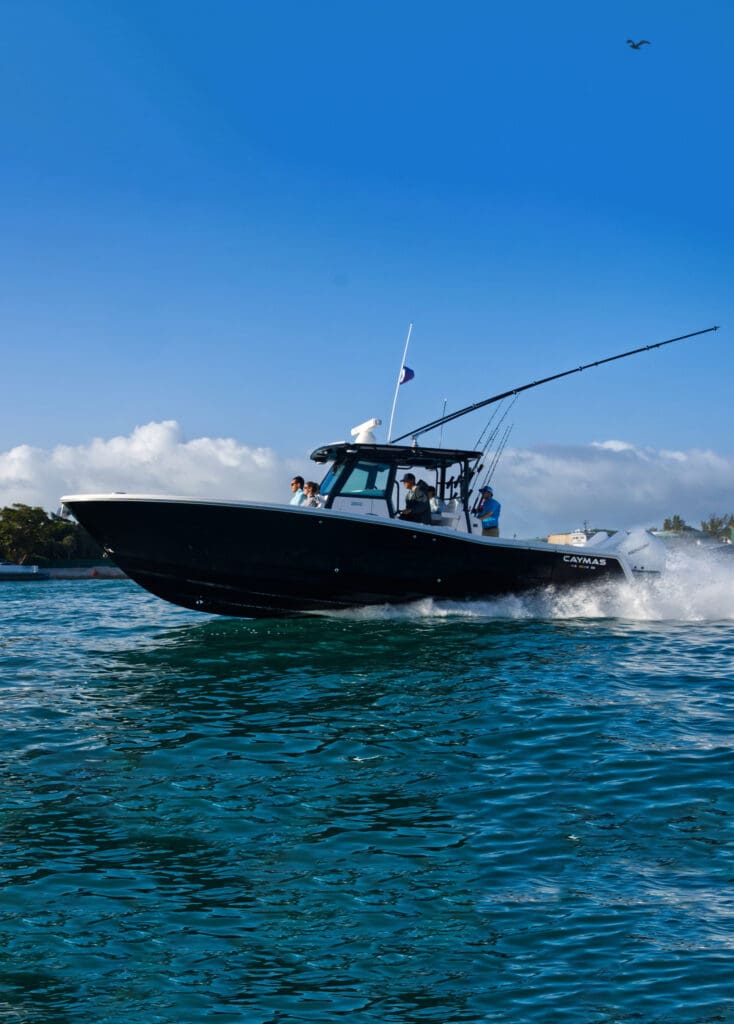Most boaters obsess over horsepower when chasing more speed—but what if the real issue lies within your rigging? At Black Label Marine Group, we see it all the time: factors that affect boat speed like poor weight distribution, sloppy wiring, or even incorrect motor height. In this post, we’ll break down five key rigging factors that can make a huge difference in how your boat performs on the water—especially at high speeds.
1. Battery Placement & Weight Distribution
Let’s start with the low-hanging fruit—weight distribution. Most boat owners don’t realize how sensitive hull dynamics are to where weight is placed.
Batteries are one of the biggest offenders. We routinely see boats with four heavy AGM batteries stacked in the aft bilge, creating a stern-heavy condition that causes the bow to ride high. The result? Poor visibility, longer time to plane, and slower top speed.
🛠 Pro Tip:
Distribute battery weight evenly along the centerline. In some cases, relocating a battery bank forward can restore balance and shave seconds off your hole shot. Better yet, consider lithium batteries to save weight and gain performance.
2. Motor Height & Jack Plate Setup
Motor height isn’t just about where your cavitation plate sits—it’s about how efficiently your prop bites and how much drag your gear case produces which drastically affects boat speed.
If your outboard is mounted too low, you’ll get excessive drag and sluggish RPMs. Too high, and you’ll ventilate in turns or lose grip in rough water. The sweet spot is unique to every hull, and we find that many boats benefit from micro-adjustments—especially when running a jack plate.
🛠 Pro Tip:
Start with the “three holes up” rule of thumb, then fine-tune from there. Use water pressure readings and RPM load testing to dial it in. A hydraulic jack plate lets you adjust on the fly, optimizing speed and trim in real time.
3. Wire Runs & Electrical Friction Loss
Electrical performance ties directly into overall boat performance—especially on today’s electronically packed consoles.
Long, undersized, or poorly routed wire runs lead to voltage drop, which causes trolling motors, pumps, and displays to underperform. Even worse, undersized wires heat up under load, becoming a fire risk.
We’ve fixed more boats than we can count where poorly executed wiring cost the owner top-end power or failed under pressure.
🛠 Pro Tip:
Always use marine-grade tinned copper wire, with appropriate gauge sizing for each load. Minimize bends and terminations, and always fuse at the source. Wire like you mean it—because your performance depends on it.

4. Steering & Rigging Tube Tension
Overly tight rigging tubes and cables don’t just look bad—they also restrict steering travel, especially at higher speeds when hydrodynamic forces are amplified.
We’ve seen motors with limited trim or swing range due to binding hoses and stiff steering cables. In some cases, it even creates a dangerous delay when turning at speed.
🛠 Pro Tip:
Use a high-quality rigging hose that allows natural movement without chafing. If you’re running hydraulic or fly-by-wire steering, inspect your routing regularly. Clean articulation keeps the boat nimble and responsive.
5. Transducer & Trim Tab Interference
Think a poorly mounted transducer won’t impact speed? Think again.
If your transducer or trim tabs are installed too deep—or in turbulent zones near the keel—they can cause drag, turbulence, and even aerated water at the prop. That kills lift and eats away at speed.
🛠 Pro Tip:
Mount transducers flush and away from strakes or step edges. Trim tabs should be aligned with the bottom of the hull—not below it—and their actuators must not interfere with your prop wash.

Bonus: Clean Install = Faster Boat
We say this all the time: a clean boat is a fast boat. Sloppy wiring, exposed holes, flapping cables, and poor rigging choices all add drag and degrade efficiency. They also make your boat harder to service and reduce resale value.
Conclusion
Speed isn’t always just about bigger motors and shinier props. Your rigging has a massive impact on how efficiently your boat runs. From where your batteries sit to how your cables are routed, paying attention to these factors that affect boat speed can give you the edge you’ve been looking for.
If your boat feels sluggish or just isn’t running right, let us take a look. Our rigging experts at Black Label Marine Group specialize in clean, functional, high-performance rigging that gets results.
Ready to Dial In Your Rigging?
Book a Rigging Consultation Today
Our team at Black Label Marine Group can evaluate your current setup and recommend performance-based upgrades that make your boat faster, safer, and easier to run. Visit one our locations or call to schedule a service consultation today.



